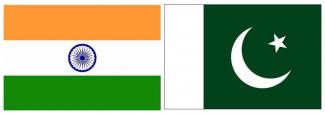Popular Culture and Indo-Pak Narratives
It can well be stated that the India-Pakistan relationship holds considerable significance in South Asia, although the two neighbours have a checkered history of disturbed bilateral relations.
There have been myriad attempts to understand this complex relationship, but most works are state-centric. There is thus the necessity to go beyond the statist and structuralist understanding of traditional International Relations (IR). In view of this, there is some scope for analyzing the relationship between these two countries from a popular perspective. This can be done by examining the nature of popular imagination towards each other in both countries. There are many ways to understand this, and one of the ways is through the role of popular culture in shaping it. Popular Culture is generally understood as “people’s cultures”, “mass culture”, or “common culture”. Popular culture includes music, cinema, television serials, and large circulations of books and magazines. Narratives of popular culture include diverse beliefs, practices and objects that are part of everyday traditions, evoking universal enjoyment among different cultural communities. In light of this, there is the scope of utilizing the medium of popular culture and observing its suitability regarding dominant norms, ideas and identity in the context of imagining Pakistan and portrayal of national self-image.
In the context of understanding the India-Pakistan relationship, cinematic narratives act as a powerful instrument of popular culture to capture and construct popular imagination. Cinema plays a crucial role in this regard by virtue of its pervasive mass appeal and its ability to deeply penetrate the popular psyche and create a penetrative impact upon people’s thinking and imagination.
The nature of the bilateral relations between India and Pakistan can be understood by probing the discourse over nationalism prevalent in the two countries by decoding the vocabulary and meanings of nationalism in the narrative of films. This can be done specifically by looking at how cinemas have imaged Pakistan in the context of the international relations of India. The question that is crucial to probe is whether the sense of nationalism is linked to the national self-image and the imagination of the neighboring country as the other. The construction of the image of the other state acts as one of the fundamental drivers that evoke the larger sense of nationalism. Linked to this is the portrayal of national self-image by a state. This provides an alternative way of looking at the notions of imaging of the other state and national self-imagination, which is mostly embedded in the neorealist paradigm of IR. It is to explore the extent to which socio-cultural processes such as the making of cinema can emerge as a crucial factor in shaping the discourses relating to bilateral conflicts and the concept of national interest.
The image of Pakistan has been a prominent subject in the political discourse of Bollywood cinema, and it is the multifaceted and multilayered representation of this image that contributes to the moulding of popular consciousness and the making of nationalist identity in the cinematic narratives of Hindi films. In Hindi films like Roja (Rose, 1992), Border (1997), Sarfarosh (Fervor, 1999), Refugee (2000), Pukar (Call, 2000), Gadar (Revolt: A Love Story, 2001), LOC (2003), Veer Zara (2004), Main Hoon Naa (Don’t Worry, I’m Here, 2004), Kya Dilli Kya Lahore (What Delhi What Lahore, 2014), Bajrangi Bhaijan (Bajrangi Brother, 2015), Phantom (2015), the notion of Pakistan has been compared and contrasted in a dialectic mode ranging from it being a warring and a terrorist state to celebrating the glorious cultural legacies and people to people contact that India shares with it. Moreover, beyond the statist imaginary, the very popularity of Pakistani artists like Rahat Fateh Ali Khan and Atif Aslam tend to challenge and critique the very foundations of the belief that Pakistan is an adversary of India. However, in the subtext of this dialectics, it must be understood how the enemy image of Pakistan accented in the dominant filmic discourse.
Ranging from partition to the Kargil conflict, Hindi cinema has represented various dimensions pertaining to the multifaceted imagery of Pakistan, as visualized from the Indian perspective. Films depicting the general tension between the two nations and the intermittent skirmishes around the Line of Control have also been produced. Bollywood cinema has thus played a very important role in building the outline of the relationship between the two neighbours in the minds of the masses. All these movies have been based on the themes such as the heroism of the security forces, feelings of patriotism in both nations, the similarities and the dissimilarities between the two countries and the hopes of reconciliation leading to peacebuilding.
Similarly, these narratives have also been crucial in shaping India's image in Pakistan. Bollywood movies enjoy a lot of popularity in Pakistan. According to a newspaper report published in The Times of India, about 50 Indian films are released in Pakistan every year. The popular ones earn up to 4-5 crores. These movies are crucial in shaping the popular imagination concerning India in Pakistan. Pakistan also has an indigenous film industry which produces cinemas that try to portray India, though not always like the usual narratives of Bollywood. This, in turn, offers wide-ranging and contrasting viewpoints to people in Pakistan. Movies such as Waar (2013), Ramchand Pakistani (2008), Alpha Bravo Charlie (1998), Laaj (2003), Angar Wadi (1994), etc. provide a different perspective, but they all end up showing India as an enemy state. Such an image of India is also supported by state and non-state actors in Pakistan. The perpetuation of animosity between both countries is the sole agenda for certain narrow interest groups. Thus, such a negative portrayal of India also has some backing in Pakistan.
There are factors beyond the state-centric approach that affect the imagination of bilateral relations between countries. In the case of India and Pakistan, filmic narrative is one such factor. Close analysis of this perspective provides us with a unique vantage point to understand India—Pakistan relations.
